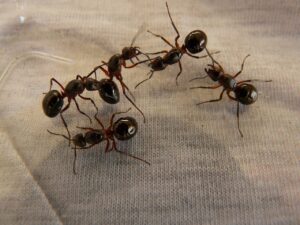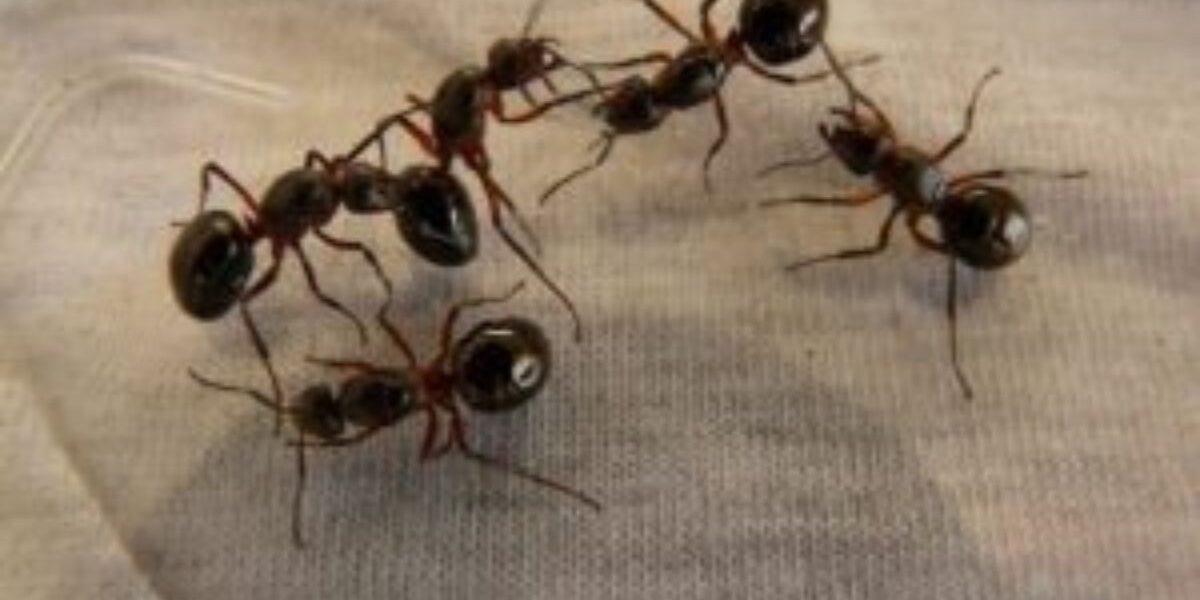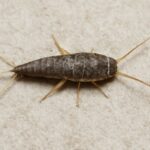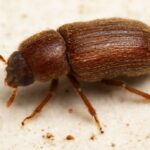The Shocking Truth

If you’ve ever opened your laptop or turned on your TV and noticed tiny ants crawling inside, you’re not alone. Ants invading electronics is a strange yet surprisingly common problem that many people face. But why exactly are ants attracted to electronics? And, more importantly, how can you keep these tiny invaders from damaging your valuable devices?
In this article, we’ll explore the surprising reasons ants swarm your gadgets, the risks they pose, and safe ways to get rid of them — plus proven tips to prevent them from coming back.
As An Amazon Associate I Earn From Qualifying Purchases
Why Do Ants Invade Electronics?
At first glance, it might seem odd that ants would be interested in something mechanical or electronic. After all, ants are looking for food and shelter, not wires and circuit boards. However, several factors explain this curious behavior:
1. Heat Attracts Ants
One of the biggest reasons ants are drawn to electronics is heat. Electronic devices — especially laptops, gaming consoles, routers, and TVs — generate warmth when running. Ants naturally seek warm places to build nests or shelter their colonies, particularly when outdoor temperatures drop. A cozy, warm gadget can become an irresistible spot.
2. Electrical Fields and Vibrations
Though still a subject of ongoing research, some studies suggest ants may be sensitive to electrical fields produced by devices. These fields might confuse or attract them, as ants use electromagnetic cues for navigation. The slight vibrations inside operating electronics might also mimic natural signals that draw ants in.
3. Food Crumbs and Residue
Electronics that are often used near snacks or drinks. Crumbs and sugary spills on or near devices attract ants searching for food. Once they find a tasty source, they explore the device further, sometimes crawling inside vents or crevices.
4. Moisture and Condensation
Ants need water to survive, and sometimes electronics can provide small amounts of moisture, especially if condensation occurs inside or around them. Humidity combined with warmth creates an inviting environment for ants.
5. Shelter and Nesting
Electronics often have small, dark, and protected spaces — perfect for ants looking to build a nest. Once inside, the device’s protective casing can shield them from predators and environmental changes.
The Dangers of Ants Inside Electronics

While ants may seem harmless, their presence inside electronics can cause serious problems:
- Electrical Shorts: Ants crawling across circuitry can cause unintended connections, leading to short circuits that may fry sensitive electronic parts.
- Metal Corrosion: Some ants release formic acid, a substance that can eat away at metal surfaces inside your electronics, weakening or destroying key components.
- Vent Blockage: When ants build nests or leave behind debris, they can clog air vents, restricting airflow and causing the device to overheat.
- Malfunctions & Slowdowns: Internal disruptions from ant activity can interfere with normal operations, leading to glitches, crashes, or reduced performance.
- Potential Fire Risk: In extreme cases, short circuits triggered by ants can generate sparks, which might ignite surrounding materials and cause a fire.
Clearly, letting ants make a home inside your electronics isn’t just gross — it’s risky and costly.
How to Safely Get Ants Out of Electronics
Now that you know why ants invade your gadgets and the risks involved, let’s discuss how to remove them without causing damage.
Step 1: Unplug Your Device
Always disconnect the power source first to avoid electric shocks or short circuits during cleaning.
Step 2: Move the Device Outside or to a Well-Ventilated Area
Ants may spread if disturbed indoors. Moving your device outside gives ants a chance to exit and keeps your home ant-free.
Step 3: Use Compressed Air to Blow Out Ants
Gently spray compressed air into vents, ports, and cracks to dislodge ants and debris. Avoid using excessive force to prevent damaging sensitive parts.
Step 4: Place Ant Baits Near (Not Inside) the Device
Use ant bait stations containing borax or other ant-killing substances nearby. This attracts worker ants, which carry poison back to the colony, eliminating the nest.
Step 5: Avoid Sprays or Liquids Inside Electronics
Never spray insecticides or water inside devices; liquids can damage circuits and void warranties.
Step 6: Clean Surfaces With Isopropyl Alcohol
Wipe external surfaces gently with a 90%+ isopropyl alcohol solution to remove residue that might attract ants. Be cautious not to let any liquid seep inside.
Step 7: Let the Device Sit Unused for a Few Days
After baiting and cleaning, leave the device unplugged and unused to allow ants time to leave and die off safely.
Stop Ants Before They Invade, Tackle them where They Hide With Top-Rated Ant Baits
1. Effective Ant Baits
Ant baits are the secret weapon for killing the entire colony. Place these near your electronics and watch the ants carry poison back to the nest — eliminating the problem at the source.
-
Terro Liquid Ant Baits — Easy to use, highly effective, and perfect for indoor use.
-
Advion Ant Gel Bait — A fast-acting gel that works on multiple ant species.
2. Compressed Air Dusters
Safely blow ants and debris out of hard-to-reach crevices without opening your device.
-
Falcon Dust-Off Compressed Gas Duster — Trusted by tech pros for gentle but powerful air blasts.
3. Electronics Cleaning Wipes and Solutions
Keep your devices clean from food residue and ant-attracting grime without risking damage.
-
Whoosh! Screen Cleaner Kit — Safe for all electronics, leaves no residue, and is non-toxic.
-
Care Touch Isopropyl Alcohol Wipes 99% — Perfect for gentle surface cleaning.
Give the ants time to leave on their own if possible, especially after baiting.
Preventing Ant Infestations in Electronics
Prevention is better than cure. Here are proven tips to keep ants out of your gadgets:
-
Keep Electronics Clean: Regularly wipe devices to remove crumbs, spills, and dust.
-
Avoid Eating Near Devices: Food crumbs are ant magnets.
-
Seal Gaps and Vents: Use mesh or covers designed for electronics to block ant entry.
-
Use Perimeter Ant Baits: Place ant bait stations around the room to reduce overall ant populations.
-
Control Moisture: Keep humidity low and dry any spills immediately.
-
Maintain General Pest Control: Regularly inspect your home and treat ant colonies outdoors.
What to Do If the Infestation Is Severe
If ants keep returning no matter what you do, it may be time to take stronger action:
- Call in a pest control expert to assess and treat the infestation thoroughly.
- Let a qualified technician examine your electronics for hidden damage or needed repairs.
- Replace any devices that are too compromised to function safely or reliably.
Frequently Asked Questions (FAQs)
1. Can ants actually harm my electronic devices?
Yes, they can. Ants inside electronics may trigger short circuits, contribute to metal corrosion, and block ventilation, all of which can permanently damage your device.
2. Why are ants drawn to laptops, routers, and similar electronics?
These gadgets emit warmth, have small internal spaces ideal for nesting, and are often placed near food or crumbs—making them prime real estate for ants.
3. Is it safe to spray insecticide directly on electronics?
No. Liquid sprays can seep into delicate parts, potentially causing further electrical damage or safety issues.
4. Will unplugging the device kill the ants inside?
Turning off and unplugging your device won’t kill the ants, but it does reduce the risk of a short circuit while you address the infestation.
5. What’s the best way to keep ants out of electronics?
Wipe down surfaces regularly, avoid snacking near electronics, set up ant bait stations, and seal off any cracks or crevices where ants might enter.
6. Can I use rubbing alcohol to clean ant-infested devices?
You can clean the exterior with 90% or higher isopropyl alcohol using a cloth or cotton swab—just don’t let it drip inside the device.
7. Why do ants seem attracted to electrical currents?
Some researchers believe ants are sensitive to electromagnetic signals, which may disrupt their natural navigation and draw them toward electronics.
8. Do all ant species invade electronic equipment?
Not all, but certain types—like pharaoh ants and tawny crazy ants—are especially notorious for nesting inside devices.
9. How long does it take to get rid of ants in electronics?
It depends on the severity. Small infestations may clear up in a few days with proper treatment, while larger ones might take a few weeks to fully resolve.
10. Should I throw away electronics that had ants in them?
Not necessarily. If the internal components aren’t severely damaged, a thorough cleaning and pest removal can often restore your device to working order.
Conclusion
Ants invading your electronics is a surprising and frustrating problem — but it’s more common than you might think. They’re attracted by warmth, food residue, moisture, and even electrical fields. Unfortunately, their presence can damage your devices and pose safety risks.
Thankfully, by unplugging devices, using compressed air, placing ant baits nearby, and keeping your electronics clean and dry, you can safely remove ants without harming your gadgets. Preventive measures like regular cleaning, avoiding eating near devices, and controlling ant populations in your home will help keep these tiny invaders at bay.
Remember, if the problem worsens or you suspect damage, professional pest control and device repair may be necessary.
Now that you understand why ants are attracted to electronics and how to protect your devices, you’re better equipped to keep your home pest-free and your technology safe.










This was such an eye-opening read—most people don’t realize how common it is for ants to get into electronics until it happens to them!
Questions I’d ask after reading:
Are certain ant species more likely to invade electronics than others?
How long does it usually take for ants to cause serious damage inside a device?
Discussion:
I think it’s fascinating how ants are drawn to warmth and electrical fields. It shows how their natural instincts can clash with modern technology in unexpected ways. The point about electrical shorts and even fire risks really highlights why it’s so important not to ignore a few stray ants.
Experience:
I’ve dealt with this firsthand—years ago, I found ants inside my WiFi router. I didn’t realize until it started randomly shutting down. Cleaning it out with compressed air and using bait nearby eventually solved the problem, but it was such a hassle! Since then, I always keep food far from my desk.
Opinion:
Overall, this is a great article because it doesn’t just explain why ants show up—it gives clear, practical steps to handle them safely. I especially agree that prevention (keeping devices clean, using baits) is way easier than dealing with a full-blown infestation later.
Thanks for sharing such a detailed and helpful guide—this is the kind of info everyone with electronics should know about!
Not all species are attracted to electronics; the common ones that are attracted are crazy ants and fire ants. Within a few days or weeks, electronic devices can be damaged. I hope this helps.